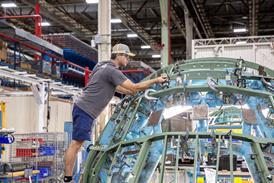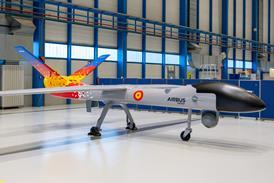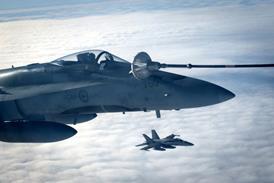This year’s Airline IT Summit was a chance for airline chief information officers to put forward their views on IATA’s Simplifying the Business campaign, which they will be responsible for implementing
The Airline IT Summit in Brussels in late June certainly came at an opportune time. Just a month before, IATA had held its annual general meeting in Tokyo, with airline heads reiterating their aim of cutting $6.5 billion of costs through the Simplifying the Business initiative. The Brussels event, a gathering for airline chief information officers (CIOs) hosted by SITA and Airline Business, was a chance for those that will ultimately be responsible for implementing much of this strategy to put across their views. “You are holding in your hands the keys to the industry’s success,” opened Tom Murphy, the IATA vice-president overseeing the simplification initiative.
While airline IT heads may be supportive of the broad aims of the IATA agenda, they have plenty of questions about the details. IATA’s wish list includes: full e-ticketing by the end of 2007; a drive to promote common-use self-service (CUSS) check-in kiosks; radio frequency identification (RFID) for baggage tracking; barcodes to replace magnetic stripes on tickets and boarding passes; and the elimination of cargo paper documentation.
CIOs complain that the Simplifying the Business slogan IATA has given to its cost-saving plan is just too simplistic, not least, underestimating the complexity required at the back end in order to provide the customer with smooth, seamless service.
“Simplification has been oversimplified. Simplification is complex,” said Ed Nicol, director of information management at Cathay Pacific, raising applause from the assembled ranks of more than 200 airline IT executives. The same sentiment was echoed by others too. “Simplifying the Business is a great mantra, but I’m not convinced it’s something we desire,” says Simon Fox, CIO at Virgin Atlantic.
The message from airline IT heads is that complexity is not necessarily bad – and simplicity is not always good. “Is simplification good all the time? I don’t think so – complexity can be a good thing,” says Cathay’s Nicol. “Some of the frills are highly desirable.” He argues that the ability of sophisticated systems to respond quickly can be crucial in bringing increased flexibility in a fast-changing business environment.
Ian Tunnacliffe, director of the newly-formed Travel Technology Research (T2R) consultancy, points out that most mature industries sustain a range of product offerings from the cheap and simple to the complex and expensive. “The IATA initiatives are about preserving complexity,” he says. “But keeping it hidden from the customer. And from the staff. And at a lower cost. And with better service.” Paul Coby, CIO of BA and chairman of SITA, underscores the point. “The key is to automate complexity. Make processes as simple as much as you can – and then automate the hell out of them.”
While e-ticketing is acknowledged as a technology whose time has come, some grumble too about the priorities that IATA has set – perhaps in part because the CIOs were not fully involved in setting them. Paul Coby himself is a long-time campaigner for IT to assume its rightful place as a key element of boardroom strategy with CIOs helping to “transform the business”. Perhaps, he said as the Summit drew to a close, that role should be reflected at industry level too, with SITA and the CIOs playing an active part in helping to shape and deliver the initiatives being set by the chief executives within IATA. Certainly it is a concept that seems to have found favour with the airline IT community, now battling to implement the guidelines.
The results of the SITA/Airline Business IT Trends Survey (see the IT Special Report July) were presented at the summit, suggesting that up to a fifth of the industry is struggling to adapt to the e-ticket world.
Many of these will be small carriers in developing nations, where the investments involved are sometimes off-putting. IATA’s Murphy warned that those using paper tickets will be “throwing $9 in the bin” every time they issue a ticket. Not all take this view, however. SITA president Peter Buecking says that one Middle Eastern airline told him that they did not need to save money by moving to e-tickets.
In the main though, e-ticketing is seen as the most laudable of the IATA goals, though here too the term “simplicity” can be misleading depending upon where you sit. Ian Munro, director IT planning and infrastructure at Canadian low-cost carrier WestJet says that e-ticketing is at least as complex as the process it replaces. However, he admits it saves on cost and improves the customer experience: “It is a good thing to do, but for reasons other than simplicity.”
As regards the move towards CUSS, IATA’s Murphy says that the debate within the industry on the relative merits of common user and branded kiosks is still ongoing. SITA’s Buecking points out that airports are increasingly becoming retail managers, and are looking for more efficient ways to manage space. “They prefer CUSS solutions,” he says.
Santiago Ontanon, CIO at Mexicana and a newcomer to aviation from a background in the high-tech sector, argues that there are plenty of solutions already out there ready and waiting for the airline industry to use. Faced with mounting congestion at Mexico City airport but a reluctance by local travellers to use e-tickets and kiosks, he helped to arm check-in staff with portable hand-held devices. “We’re bringing the kiosk to the passenger,” he says. “It’s not rocket science. It’s standard technology.” As an outsider, Ontanon adds that he is “shocked” by the lack of IT integration in the airline sector, with the industry solving the same problems many times over rather than looking for common and potentially off-the-shelf solutions.
RFID doubts
The technology that the CIOs are least convinced about is the use of RFID tags for customer baggage tracking. IATA’s Murphy promises that a global standard will be in place by the end of the year. The issue of a common standard is one that IATA concedes the industry missed as airlines began to develop their own e-tickets and seek interline solutions. Murphy concedes: “Frankly we’re too late. We’re going to rely on bilateral connections.” As other technologies emerge IATA plans to move faster, although Murphy admits that for RFID “more work needs to be done on the business case”.
Cathay’s Nicol agrees that RFID technology definitely has its uses, but not necessarily for passenger bags as yet. The carrier has tested the technology on and achieved only a 60% success rate. “We’ve found the technology, but we’re tackling the wrong product. It should be used for unit load devices and pallets,” he says.
Nicol also has questions regarding the move to barcodes for boarding passes and tickets. “There is a process attached to it. In some airports, you can’t get into the building without a ticket,” he warns.
The move towards paperless cargo is seen as a worthwhile aim, although cargo IT specialists warn that the airline industry will have to work with the entire logistics chain to make this a reality.
All this leaves airline CIOs with plenty to think about and questions were raised as to whether airlines were providing enough resources to get the job done. “Last year’s hopes that budgets would recover have been misplaced,” says Buecking, pointing to the IT Trends Survey, which suggested that IT spend accounts for a mere 2.3% of airline revenues.
Richard Clarke, co-founder of T2R, points out that in the 1970s, airlines were streets ahead in IT. “Now we’re underinvested” he warns. He also points to the lack of buying power in a fragmented industry, contrasting it with the small number of airline IT vendors to choose from.
A number of attendees pointed to alliances as a key tool for airlines seeking to boost their bargaining power, and SITA is also seen as having a crucial role to play. The Star Alliance announced in June that it is looking to form a partnership with a global distribution system new entrant (GNE), for instance. GNEs are perhaps a good example of the challenges facing CIOs. As Clarke points out, the move to the web has, if anything, made the task of yield management more complex rather than less. Clearly the move towards simplicity will be full of complexities.
COLIN BAKER LONDON
Source: Airline Business























